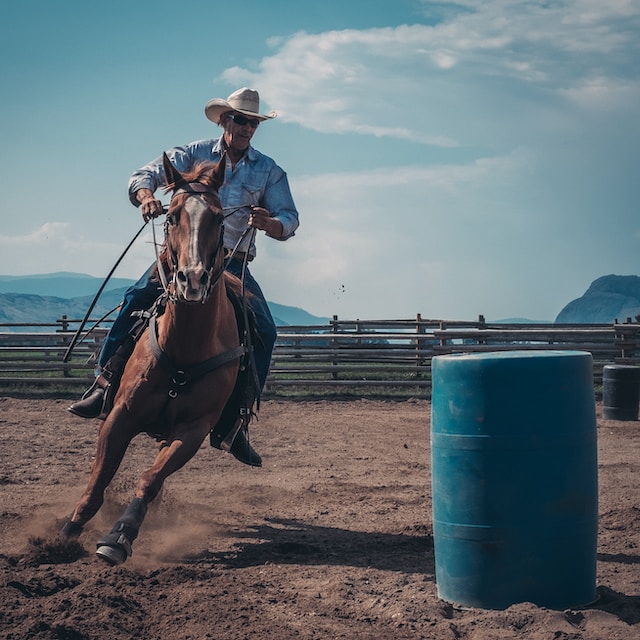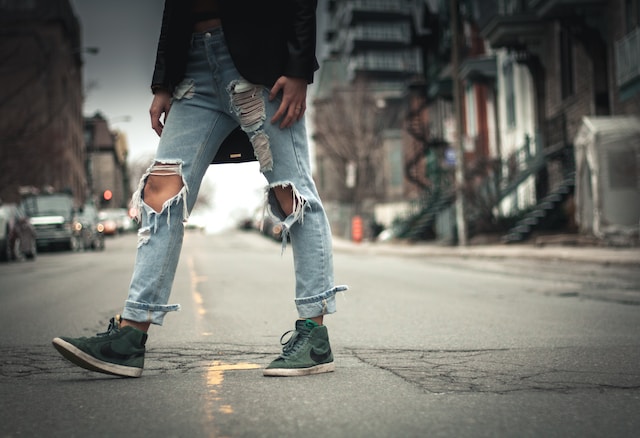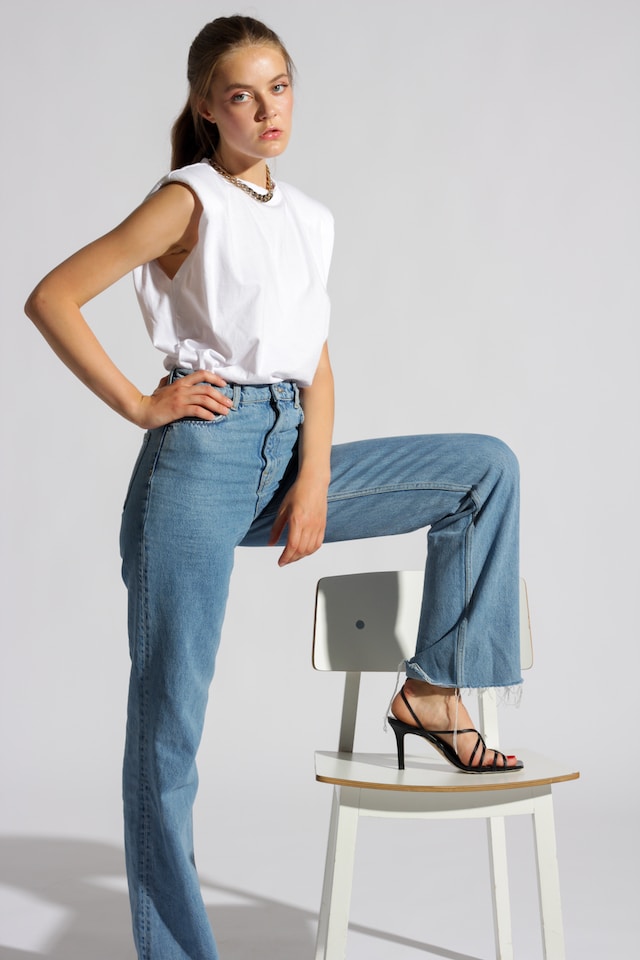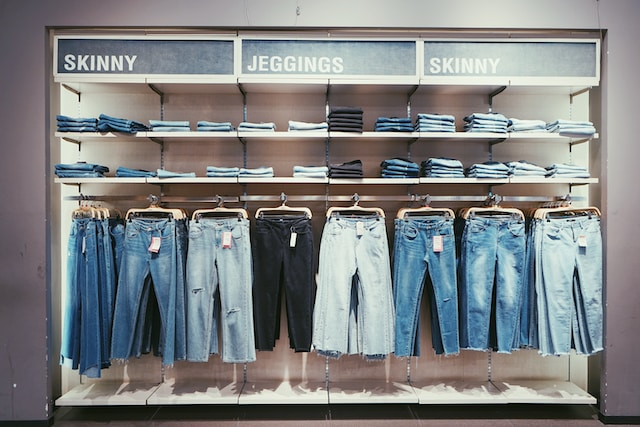
Denim jeans have become a staple in fashion, transcending trends and generations to become an enduring symbol of style and comfort. From their humble beginnings as workwear in the late 19th century to their widespread popularity and cultural significance today, jeans have indeed come a long way.
The history of denim jeans traces back to the rugged landscapes of the American West, where durable clothing was a necessity for workers and miners. It was here that Levi Strauss, a German immigrant, and Jacob Davis, a tailor, joined forces to create a revolutionary garment that would forever change the fashion landscape.
In 1873, the duo patented their creation: heavy-duty trousers made from denim fabric, reinforced with rivets at key stress points, including pocket corners and the base of the fly. This innovation not only ensured the longevity of the jeans but also made them well-suited for the demanding labor-intensive occupations of the time.
Initially designed for manual labor, jeans quickly found their way into the mainstream fashion scene. Hollywood stars like Marlon Brando and James Dean adopted denim as their uniform, giving jeans a rebellious and youthful appeal. As a result, denim jeans became synonymous with counterculture and a symbol of individuality. With each passing decade, jeans continued to evolve, adapting to the changing tastes and demands of consumers.
The Golden Age of Cowboys and Hollywood
The 1920s marked a significant period in the history and evolution of jeans. As the world emerged from the ravages of the First World War, a sense of optimism and liberation permeated society. This newfound spirit of freedom was reflected in the fashion choices of the time, and jeans began to make their presence known beyond the realm of workwear.
The youth of the era, commonly referred to as the “flappers,” embraced jeans as a way to challenge conventional ideals of femininity. These women, determined to break free from restrictive clothing, found solace in the relaxed fit and durability of denim. They wore jeans as a sign of independence, asserting their right to choose comfort over societal expectations.
The popularity of jeans further skyrocketed in the 1920s thanks to the growing influence of Hollywood. As silent movies evolved into talkies, film stars became cultural icons, and their fashion choices had a profound impact on popular culture. Actors like Clara Bow and Louise Brooks were frequently photographed wearing jeans, solidifying its status as a trendy and fashionable garment.
Denim During the Great Depression and World War II
The 1930s brought unprecedented economic challenges with the onset of the Great Depression. As families struggled to make ends meet, fashion took a backseat to survival. However, jeans, with their durable and practical nature, still managed to find a place in the hearts and wardrobes of many during these difficult times.

Amidst the economic hardship, denim jeans became an affordable option for both men and women. The sturdy fabric and reinforced stitching ensured that a single pair of jeans could withstand the rigors of daily wear and tear, lasting far longer than other garments. In an era of scarcity, this longevity was a valuable attribute.
During World War II, jeans gained further momentum as they became part of the practical uniform for millions of soldiers. The military recognized the strength and reliability of denim, making it a popular choice for soldiers on the battlefield. Jeans became synonymous with ruggedness, resilience, and patriotism.
Civilian life also influenced the evolution of jeans during this time. With women taking on roles traditionally held by men in factories and other industries to support the war effort, jeans became a symbol of empowerment. Women loved the freedom of movement and practicality that denim offered, enabling them to navigate the challenges of their newfound responsibilities with ease.
Rebel Without a Cause and the Rise of Teen Culture
In the 1950s, a cultural shift was underway as teenagers began asserting their independence and challenging societal norms. The iconic film “Rebel Without a Cause” captured the essence of this rebellious spirit, and its star, James Dean, became an emblem of teenage rebellion.

Dean’s character, clad in a simple white T-shirt and a pair of jeans, epitomized the cool and defiant attitude of youth culture. This film, released in 1955, brought jeans into the forefront of fashion and popularized them among teenagers.
Dean’s effortless style and the relatable struggles depicted in the film resonated with young audiences, who sought to assert their own identity and distance themselves from the conformist values prevalent in society.
The portrayal of jeans as the wardrobe choice of the quintessential rebel revolutionized the perception of denim pants. Previously considered as workwear or casual attire, jeans were now associated with youthful expression and a rejection of the status quo. Teenagers across the country, influenced by Dean’s portrayal, eagerly adopted jeans as a symbol of their rebellion and nonconformity.
As the popularity of jeans skyrocketed among teenagers, fashion designers began to take note. They recognized the need to cater to this emerging market and started producing jeans specifically tailored for younger customers. The styles became more slim-fitting and tailored, reflecting the desire for a more fashionable and youthful look.
Counterculture and Hippie Influence
The history and evolution of jeans took a remarkable turn during the counterculture and hippie movement of the 1960s. As traditional societal values were questioned and youth rebelled against conformity, jeans became an emblem of individuality and nonconformity.
This cultural shift was brought to the forefront by the influential hippie movement. Rejecting materialism and embracing values of peace, love, and freedom, hippies sought to express their ideals through their clothing. Jeans, with their rugged simplicity and association with the working class, perfectly embodied the counterculture spirit.
Jeans became a symbol of liberation from the constraints of mainstream society. Gone were the rigid dress codes and formal attire of the past; instead, jeans represented freedom of expression and a rejection of societal norms. They were worn not only by men and women but also by people of all races and backgrounds, unifying the counterculture movement under a shared emblem.
With their widespread adoption by the counterculture movement, jeans began to infiltrate mainstream fashion. Designers and manufacturers recognized the demand for jeans and started creating new styles to cater to this burgeoning market. Bell-bottoms, flared jeans with wide leg openings, became particularly popular and symbolized the free-spirited nature of the hippie movement.
Grunge and Minimalism
In the history and evolution of jeans, a significant shift occurred in the 1990s with the emergence of grunge fashion and the rise of minimalism. This period marked a departure from the extravagant styles of the previous decades, as a newfound sense of simplicity and raw authenticity took hold.
The grunge movement, epitomized by bands like Nirvana and Pearl Jam, brought an alternative and nonchalant aesthetic to the forefront of popular culture.

With their shredded denim, flannels, and worn-out jeans, grunge musicians and their fans embraced a deliberate look of dishevelment.
Jeans became a defining element of this rebellious style. The history and evolution of jeans took a turn towards distressed and faded designs, reflective of a carefree attitude towards fashion. Ripped knees, faded washes, and frayed hems became desirable features, harkening back to the rebellious spirit of the early days of denim.
Minimalist Fashion
Simultaneously, the 1990s saw the rise of minimalism in fashion. Inspired by clean lines and a pared-down aesthetic, minimalism embraced a simplistic and understated approach to style. This less-is-more mentality permeated the world of denim, with plain, straight-leg jeans becoming a staple for those drawn to the minimalist movement.
Minimalist fashion emphasized the value of timeless pieces that could withstand the test of time, both in terms of design and durability. Jeans, with their rugged nature and versatility, perfectly fit this ethos. Classic blue jeans or black denim in simple cuts became wardrobe essentials for those embracing the minimalist lifestyle.
High Fashion and Sustainability in the History and Evolution of Jeans:
In recent years, the history and evolution of jeans have taken a turn towards high fashion and sustainability. As the fashion industry grapples with its environmental impact, designers and brands have begun incorporating sustainable practices into the production of jeans.
One of the key changes in the history and evolution of jeans is the use of organic and recycled materials. Traditional denim production requires large amounts of water, chemicals, and energy. However, with the rise of sustainable fashion, denim manufacturers have started using organic cotton, which is grown without harmful pesticides and fertilizers, reducing the environmental footprint of jeans.
Another important aspect of sustainability in the history and evolution of jeans is the adoption of ethical manufacturing practices. Many brands have recognized the importance of fair wages, safe working conditions, and workers’ rights. By partnering with factories that uphold these standards, jeans are now being produced in a more responsible and ethical manner.

Innovative Technqiues in Minimizing Waste
Furthermore, designers have begun embracing innovative techniques to minimize waste in the production process. Upcycling, for example, involves transforming old or discarded jeans into new garments, minimizing the need for virgin materials. This approach not only reduces the environmental impact but also adds a unique and artistic touch to the final product.
In the realm of high fashion, jeans have also undergone a transformation. Designers have elevated denim to new heights by incorporating intricate embellishments, luxurious fabrics, and creative silhouettes. Jeans have become a canvas for artistic expression, blurring the lines between casual and formal attire.
The history and evolution of jeans in high fashion and sustainability reflect a growing consciousness within the industry. Jeans have gone beyond being merely functional workwear to becoming a symbol of fashion-consciousness and sustainability. As the fashion industry continues to evolve, the history of jeans will undoubtedly witness further transformations, ushering in a new era of responsible and visionary denim fashion.
